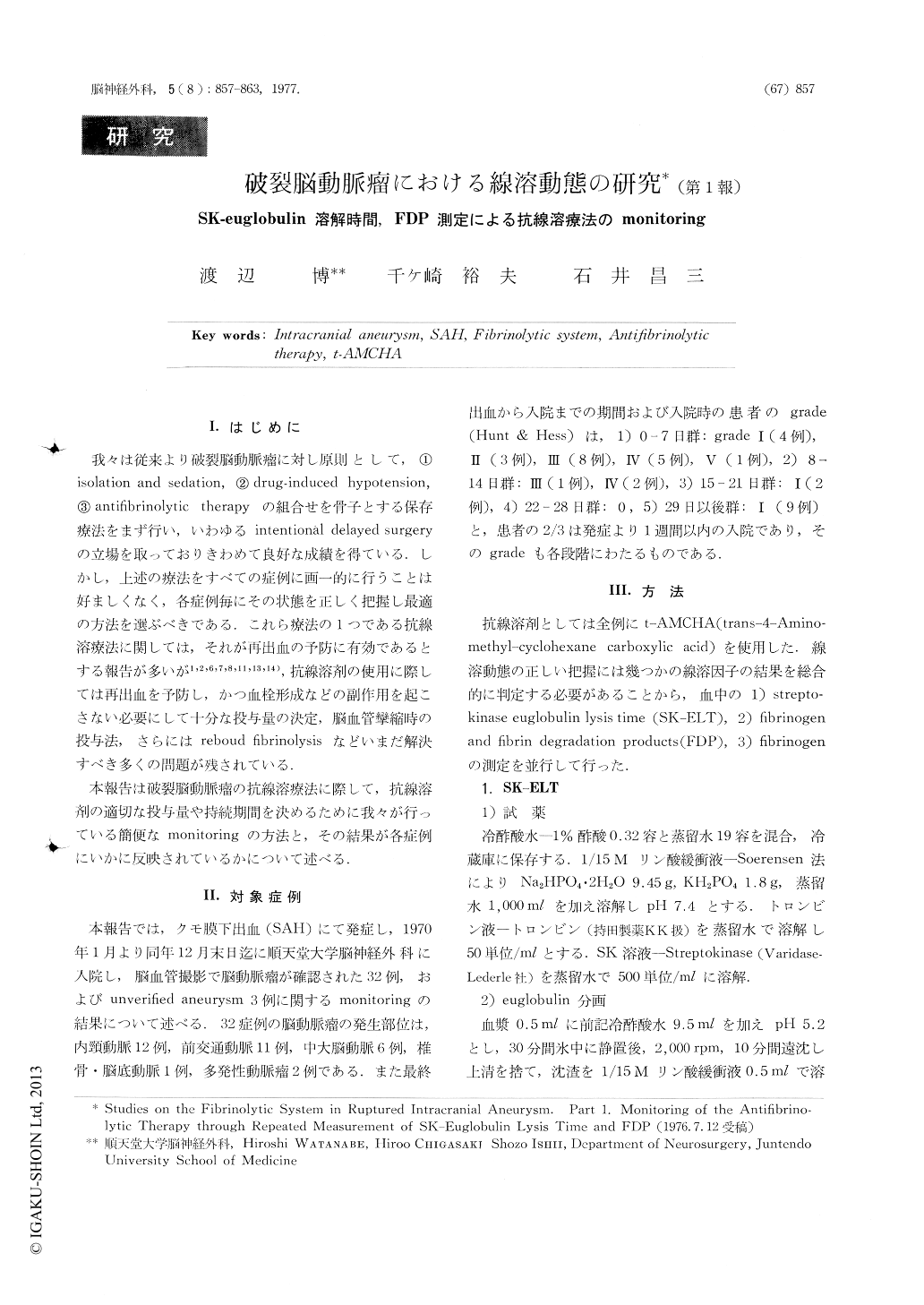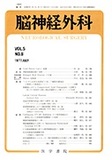Japanese
English
- 有料閲覧
- Abstract 文献概要
- 1ページ目 Look Inside
Ⅰ.はじめに
我々は従来より破裂脳動脈瘤に対し原則として,①isolation and sedation,②drug-induced hypotension,③antifibrinolytic therapyの組合せを骨子とする保存療法をまず行い,いわゆるintentional delayed surgeryの立場を取っておりきわめて良好な成績を得ている,しかし,上述の療法をすべての症例に画一的に行うことは好ましくなく,各症例毎にその状態を正しく把握し最適の方法を選ぶべきである.これら療法の1つである抗線溶療法に関しては,それが再出血の予防に有効であるとする報告が多いが1,2,6,7,8,11,13,14),抗線溶剤の使用に際しては再出血を予防し,かつ血栓形成などの副作用を起こさない必要にして十分な投与量の決定,脳血管攣縮時の投与法,さらにはreboud fibrinolysisなどいまだ解決すべき多くの問題が残されている.
本報告は破裂脳動脈瘤の抗線溶療法に際して,抗線溶剤の適切な投与量や持続期間を決めるために我々が行っている簡便なmonitoringの方法と,その結果が各症例にいかに反映されているかについて述べる.
Streptokinase euglobulin lysis time (SK-ELT), fibrin and fibrinogen degradation products (FDP) and fibrinogen in the blood were determined to know the proper dosage of t-AMCHA which would not cause the ischemic complications yet suffice to prevent the rebleeding of ruptured intracranial aneurysm. SK-ELT was almost doubled (130sec) by the administration of 6-8 g/day of t-AMCHA within 24-48 h in normal control. On the other hand, SE-ELT in SAH patients fluctuated tremendously during ten days after the first bleeding.
EDP took a high value soon after the first bleeding in grade IV and V patients.

Copyright © 1977, Igaku-Shoin Ltd. All rights reserved.


